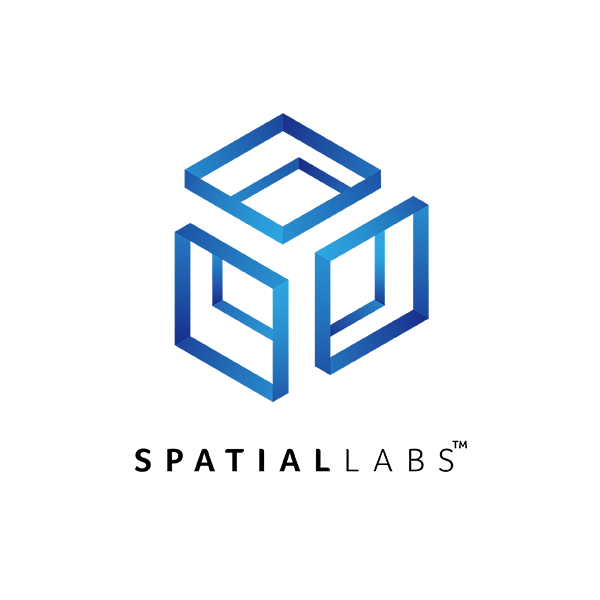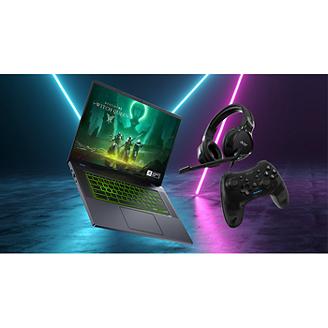-
How to Level Fast in ARC Raiders (Best EXP Methods)
If you want to level fast in ARC Raiders, you need to understand how EXP actually works. The game doesn’t explain its systems very clearly, and a lot of players end up wasting time on low-value activities without realizing there are far better ways to grind. This guide breaks down how EXP is earned and highlights the most efficient methods to farm it, whether you’re playing solo, duo, or with a full squad.
How EXP is gained in ARC Raiders
Leveling in ARC Raiders comes from a mix of time spent on the surface, successful extractions, looting, completing objectives, and landing kills or assists on both players and ARC units. The game does not always show exact numbers, so here is the full breakdown of what gives you EXP and how much each source rewards.
Core EXP Sources
Action or Source
Typical XP Reward
Time spent on the surface
181 XP per minute
Successful extraction (Safe Return Bonus)
1,000 to 2,000 XP
Searching standard containers or lockers
200 XP each
Searching high-value containers or airdrops
500 XP each
Looting a Raider or player body
500 XP
Assist on Raider (PvP)
250 XP
Raider kill or knockout
~500 XP plus damage XP plus 500 XP for looting
Scanning or looting probes or special objects
500 to 700 XP
Mid to late game quests
5,000 to 30,000+ XP
ARC Enemy EXP Chart
Fighting ARCs is one of the most reliable ways to level up in the game. You gain EXP for destroying each unit, for looting its parts, and a considerable amount from dealing damage, especially when breaking multiple armor plates or fighting high-health enemies.
Low-Tier ARCs
Enemy
XP for Destroying
XP for Looting
Wasp
100
200
Hornet
150
250
Snitch
100
200
Tick
50
100
Pop
50
100
Fireball
50
100
Turret
100
200
Spotter
100
200
Mid-Tier ARCs
Enemy
XP for Destroying
XP for Looting
Surveyor
200
300 for core, 100 per extra part
Sentinel
200
300
Shredder
200
250
High-Threat ARCs
Enemy
XP for Destroying
XP for Looting
Rocketeer
500
500 per part
Leaper
500
600 for core, 500 per part
Bastion
500
500 for core, 250 per part
Bombardier
500
300 per part
Event and Boss ARCs
Enemy
XP for Destroying
XP for Looting
The Queen
1,000
1,000 for core, 500 per part
Harvester
—
500 per part
Matriarch
1,000
1,000 for core, 500 per part
Best EXP farming methods in ARC Raiders
Now that you understand how EXP is earned and how much each activity and ARC enemy provides, it is time to turn that knowledge into practical leveling strategies. While ARC Raiders offers many small ways to earn XP, only two approaches truly stand out. One method delivers massive bursts of XP and credits if you are willing to take on danger, and the other gives steady, reliable progress with almost no risk at all.
Below are the two most effective ways to level quickly in ARC Raiders.
Method 1: Hullcracker Big ARC Hunt (high risk, high reward)
This is one of the fastest ways to gain huge XP and credits in ARC Raiders. The idea is straightforward:
Bring a Hullcracker, bring ammo, and spend the raid hunting Bastions and Bombardiers.
These two ARCs drop the most parts, give large destroy XP, and generate massive damage XP. With several big ARC kills, a single run can reach 50,000 to 80,000 XP and 100,000 to 150,000 credits worth of loot.
How to run it
* Bring a Hullcracker with around 50 launcher rounds.
* Equip Looting Mk. 3 (Survivor) to get* three safe pockets for banking ARC cores, and
* self-revive, which makes failed fights far less punishing.
* Rotate between known big ARC spawn locations.
* Use solid cover when fighting Bastions, and fight Bombardiers from underneath a roof so Spotters cannot mortar you.
* Drop smoke grenades on the body to loot safely, using ziplines for fast entry and escape.
* Kill smaller ARCs along the way for extra XP and avoid PVP
* Extract late or via a Raider Key hatch for maximum safety.
You keep all XP even if you die, and because your pocketed cores cover most of the run’s cost, you only need to extract successfully one time to break even on money you spend on the Hullcracker, launcher rounds, and Looting Mk. 3 (Survivor).
Method 2: The Loot Goblin Run (low risk, steady XP)
If you want consistent XP without fighting big ARCs or gambling your gear, this method is the easiest in the game. The idea is simple:
Search everything. Every container, every locker, every crate, every ARC body, every probe, even if someone else already opened it.
ARC Raiders still gives you XP for searching objects that another player has looted, so you are constantly earning progress just by interacting with anything marked “searchable.”
Searching stacks incredibly fast because the numbers are generous:
* Standard containers: 200 XP each
* High-value containers: 500 XP each
* ARC bodies: 200 to 700 XP each
* Probes or special world objects: 500 to 700 XP each
A single run filled with aggressive looting often reaches 15,000 to 20,000 XP, even if you barely fight anything.
How to run it
* Bring whatever gear you want, but it is better to use Looting Mk. 2, a cheap gun that’s good for PvP and PvE such as the Ferro or Anvil with a Sticher, and basic heals and shield rechargers. You can also run free loadout, but that heavily limits your loot stash.
* Run solo or with a group, it does not matter.
* Go to an area with large amounts of loot and search absolutely everything. Even if teammates or other squads searched it first, because the XP is awarded for the search, regardless of whether an item is in the box or not.
Example XP breakdown
A typical loot goblin run might look like this:
* 40 standard containers → 40 × 200 = 8,000 XP
* 5 high-value containers → 5 × 500 = 2,500 XP
* 4 ARC bodies → 4 × 500 = 2,000 XP
* 3 probes or special objects → 3 × 500 = 1,500 XP
Total: 14,000 XP, before counting time on the surface, random ARC kills, or extraction XP. Reaching 15,000 to 20,000 XP requires almost no risk.
Conclusion
Leveling quickly in ARC Raiders is all about choosing the approach that fits your playstyle. If you want explosive XP gains and high-value loot, the Hullcracker big ARC hunt can push your levels up rapidly with just a few successful kills. If you prefer a safer and steadier route, the loot goblin method turns every searchable object into free XP with almost no risk or investment.
Both methods work consistently, and both can be mixed into your regular raids depending on your gear, comfort level, and the map you are running. As long as you stay active, search everything you see, and take advantage of ARC XP whenever the opportunity appears, you will keep leveling efficiently no matter how you choose to play.
Recommended Products
Predator Helios 18 AI (RTX 5090)
Buy Now
Predator Helios Neo 18 AI (RTX 5070Ti)
Buy Now
Acer Nitro 16S (RTX 5070)
Buy Now
-
EU Moves to Regulate Microtransactions in Games, Will They Succeed?
The European Union is considering sweeping new rules that could restrict or even ban microtransactions in video games, a move that has ignited fierce debate among developers, players, and regulators alike. These proposed changes stem from the EU’s Digital Fairness Act, which aims to eliminate manipulative in-game purchases and deceptive systems disguised as virtual currency.
What began with a complaint about the Swedish horse game Star Stable has evolved into a continent-wide discussion about transparency, consumer protection, and whether governments should decide how games make money. Supporters see this as a long-overdue pushback against pay-to-win mechanics, while critics warn that it could cripple Europe’s thriving game industry. As the EU moves closer to finalising the law, one question remains: can it actually succeed where others have failed?
What is the EU trying to do and why?
The European Union’s new proposal, introduced under the Digital Fairness Act, aims to reform how microtransactions are presented and purchased in video games. The goal is not necessarily to outlaw microtransactions entirely, but to prevent deceptive systems that disguise real-money spending through virtual currency such as gems, coins, or credits. Regulators argue that players, especially children, are often misled about how much they are truly spending when in-game purchases use indirect currencies instead of showing real prices in euros.
Under the proposed framework, all in-game purchases would need to clearly display their value in real money, provide accessible refund options, and remove manipulative elements such as “limited time offers” or fake discounts. The EU’s Consumer Protection Cooperation Network has specifically targeted practices that prey on player psychology, including pay-to-win systems where players gain competitive advantages through purchases.
According to EU officials, these rules are designed to protect consumers, particularly younger audiences, from being exploited by aggressive monetisation tactics. While few dispute the goal of consumer protection, the gaming industry warns that the proposed changes could upend how modern free-to-play games are designed and monetised across Europe.
How virtual horses started it all
The EU’s effort to regulate microtransactions began with an unlikely source: a Swedish online horse game for children called Star Stable. Parents complained that the game encouraged kids to buy in-game virtual currency without understanding how much real money they were spending. What looked like small digital purchases of “Star Coins” often turned into significant credit card bills, which prompted the EU’s Consumer Protection Cooperation Network to take action.
This case laid the groundwork for the Digital Fairness Act and its new focus on transparency. Lawmakers argued that if virtual currency can be exchanged for items or gameplay advantages, it should be treated as a financial transaction rather than a harmless feature. Their reasoning was simple: if players spend real money, they deserve the same clarity and consumer rights as any other buyer.
While Star Stable may have triggered the debate, the idea of charging players for digital extras is nothing new. The first major example was the Oblivion Horse Armor DLC released in 2006, when Bethesda offered a small cosmetic upgrade for $2.50. It was mocked at the time, yet it opened the door for a business model that evolved into modern microtransactions, loot boxes, and pay-to-win systems.
From a children’s horse game to a continent-wide legislative push, the history of microtransactions shows how quickly small design choices can reshape an entire industry.
How the EU gaming industry is responding
Europe’s gaming industry has not taken these proposals lightly. Major developers, including Supercell, have warned that the new rules could fundamentally change how free-to-play games operate in the region. In an open letter, Supercell’s CEO argued that the Digital Fairness Act would “break how many games fundamentally work” by forcing companies to replace token-based economies with real currency listings for every in-game item.
Developers say the shift would not only complicate the player experience but also harm one of Europe’s few global tech success stories. They argue that systems using virtual currency, such as buying tokens in bulk, exist to make transactions smoother and to reduce repeated small payments. In their view, the new system would require constant parental approval, individual pricing for every transaction, and an unrealistic level of compliance for developers.
Several major trade bodies, including the European Game Developer Federation, have echoed these concerns. They warn that excessive regulation could hurt smaller studios that lack the resources to adapt, leaving only large publishers able to comply. Critics also worry that this could push developers toward other forms of monetization such as in-game advertising, which may create new problems for user privacy and enjoyment.
Despite these warnings, few in the industry deny that something must change. Even companies opposed to the proposals admit that the current model of psychological triggers, time-limited offers, and opaque pricing has gone too far. The question now is how to reform these systems without stifling creativity or driving developers out of Europe altogether.
What gamers think about it
Public opinion among gamers has been far more divided. Many players welcome the EU’s intervention, seeing it as a long-overdue step toward curbing manipulative design and pay-to-win mechanics. For years, players have criticized how modern games pressure users into spending money through fake discounts, fear-of-missing-out events, and hidden costs behind virtual currencies. These systems often blur the line between entertainment and exploitation, especially in mobile and free-to-play titles.
At the same time, some gamers worry that government regulation could overreach and limit creative freedom. They argue that not all microtransactions are harmful and that optional purchases, such as cosmetic skins or expansion packs, help developers fund ongoing support for their games. Others note that some of their favorite titles, like Clash of Clans, might not survive if every purchase required direct euro pricing and new layers of legal approval.
Across forums and social media, the debate reflects a growing tension between fairness and freedom. Players are frustrated with the state of monetization, yet cautious about what happens when politicians step in to “fix” it. While many still remember the backlash to the Oblivion Horse Armor DLC as the moment this issue began, few can agree on what a fair system looks like today. For most gamers, the hope is simple: more transparency, less manipulation, and a gaming experience that rewards skill rather than spending power.
Will the EU actually succeed?
Whether the EU can successfully eliminate or regulate microtransactions remains uncertain. The Digital Fairness Act is still moving through consultation stages, and several EU bodies disagree on how to define virtual currency in the first place. Some legal experts argue that in-game tokens should be treated as digital goods, similar to downloadable content, while others want them classified as a financial instrument subject to the same scrutiny as real money. Until that distinction is clear, enforcement will remain inconsistent across member states.
Even if the Act passes, implementation could take years. Large publishers like Supercell and Ubisoft have the resources to adjust, but smaller studios may struggle to comply with complex transparency and refund requirements. This could lead to fewer indie releases and even drive some companies to withdraw from the European market altogether. A similar pattern occurred after the introduction of GDPR, when compliance costs forced many small websites and services to shut down within the EU.
Despite these challenges, the pressure for reform is unlikely to fade. The rise of manipulative monetization and pay-to-win systems has already eroded public trust in many gaming companies. If the EU’s efforts can restore that trust by making microtransactions clearer, more honest, and less exploitative, it may set a new global standard for digital consumer protection. However, if the legislation becomes too burdensome or fragmented, it risks repeating the same mistakes, a well-intentioned policy that ends up punishing both players and developers.
For now, the debate over microtransactions continues to reflect a broader question facing the gaming world: should fun be earned through gameplay, or bought with money disguised as gems and tokens?
Recommended Products
Predator X39 Curved Gaming Monitor
Buy Now
Acer Nitro 60 (RTX 5070 Ti)
Buy Now
Predator Orion 7000 (RTX 4080)
Buy Now
-
5 Best Curved Entertainment and Gaming Monitors From Acer
This article will discuss some of the pros and cons of a curved monitor, why you should buy one, and then introduce five of the best Acer curved monitors. Curved monitors have been around since 2013, and have a slight curvature that mimics the curve of the human eye. They offer viewers a more immersive experience by filling our peripheral vision and directing our eyes towards the center, which is more comfortable than staring at a flat screen. These monitors are particularly popular in the gaming world because they deliver a more lifelike experience while increasing the field of view, which allows gamers to see more at once.
What are the benefits of a curved monitor?
Almost everyone will have used a flat monitor at some point in their lives, but is it really worth switching to a curved one? Here are some reasons why you might consider switching to a curved monitor.
1. Creates a cinematic experience
One of the main advantages of curved monitors is their enhanced field of view, which delivers an immersive and cinema-like experience without any additional effort from the viewer. This also creates a competitive advantage when gaming, as users can detect opponents from all angles, including the sides, without moving their head.
2. Enhanced eye comfort
Curved monitors direct light from all angles towards our eyes, so we can watch our favorite shows without putting unnecessary strain on our eyes. In comparison, flat monitors can cause eye strain and fatigue during long gaming sessions or when binge-watching our favorite show because our eyes must constantly refocus to view the whole screen.
3. Less glare
Although glare can affect screens of all types, curved monitors have an advantage when handling glare. Curved monitors can deflect some reflections away from our eyes, consequently reducing annoying glare from lights or windows. In contrast, reducing glare on flat screens relies on where they are positioned.
What are the downsides of a curved monitor?
By now you may be seriously considering a curved monitor, so it is only fair that we cover some of the potential downsides.
1. Viewing angle limitations
As mentioned, curved monitors offer an excellent viewing experience due to their curved appearance. However, finding the optimal viewing position can be challenging, especially when watching the screen with a group. Curved monitors are best viewed from a central position, meaning people watching from the sides may experience image distortion. If you frequently watch movies, game, or collaborate on documents with multiple people, then a flat monitor may be a better choice.
2. Distortion
One major downside of curved monitors is the potential for distortion, which can alter the text and images at the screen's edges and impact precision. As such, curved monitors may be unsuitable for graphic design or artistic tasks that require a high level of accuracy. These users may therefore prefer a flat screen with an undistorted view.
3. Incompatibility with some games and content
Although most modern games have a wider viewing angle, some older games, applications, websites and content may not be optimized for curved displays. This can lead to distorted visuals or inconsistencies and can impact the overall viewing experience.
Our top 5 Acer curved computer monitors
Now that we have covered the pros and cons of curved monitors, here are our top 5 picks from the Acer range.
1. Acer EI2 Curved Entertainment Monitor
This stunning 31.5 inch (80 cm) curved screen offers a Wide Quad High Definition (WQHD) display resolution of 2560 x 1440 for sharper image quality. It has a 1 ms response time which reduces motion blur, and a refresh rate of 165 Hz, making it an ideal companion for casual gaming. This curved LED monitor also has a brightness of 400 nits for unrivaled quality visuals.
* Horizontal / vertical viewing angle: 178°
* Tilt angle: -5° to 15°
* Standard refresh rate: 165 Hz
* Color supported: 16.7 million colors
* Contrast ratio: 100,000,000:1
* Native contrast ratio: 3,000:1
* Speakers: 2
* Ports: HDMI 2.0 x 2, headphone jack, DisplayPort
* Max. power supply wattage: 68 W
* Operating power consumption: 45 W
* Height with stand: 19.93 inches (50.62 cm)
* Width with stand: 28.06 inches (71.27 cm)
* Depth with stand: 9.03 inches (22.93 cm)
* Weight with stand: 15.59 lb (7.07 kg)
The Acer EI2 Curved Entertainment Monitor is available for USD $199.99 on the Acer store, or USD $169.99 with a 15% student discount.
2. Acer Nitro EDA3 Curved Gaming Monitor
The Acer Nitro EDA3 Curved Gaming Monitor is designed for gaming and includes an ultra fast refresh rate to streamline every move. Its 16:9 aspect ratio delivers high-quality images in minute detail, while the zero-frame design maximizes screen real estate for an enhanced gaming adventure. This LED gaming monitor has a refresh rate of 144 Hz with HDMI 2.0, and 180 Hz with Display Port, along with a 1 ms VRB response time. It also supports AAMD FreeSync Premium, making it an ideal choice for gamers.
* Horizontal / vertical viewing angle: 178°
* Tilt angle: -5° to 20°
* Standard refresh rate: 144 Hz with HDMI 2.0; 180 Hz with Display Port
* Color supported: 16.7 million colors
* Contrast ratio: 100 Million:1
* Brightness: 250 Nit
* Screen resolution: 2560 x 1440
* Speakers: 2
* Ports: HDMI 2.0 x 2, headphone jack, DisplayPort
* Height with stand: 20.27 inches (51.48 cm)
* Width with stand: 27.93 inches (70.94 cm)
* Depth with stand: 7.84 inches (19.91 cm)
* Weight with stand: 10.8 lb (4.89 kg)
The Acer Nitro EDA3 Curved Gaming Monitor is available for USD $219.99 on the Acer store, or USD $186.99 with a 15% student discount.
3. AOPEN HC5 Curved Gaming Monitor
Next up is the AOPEN HC5 Curved Gaming Monitor that lets viewers enjoy top-quality high definition entertainment from the comfort of their gaming chair. Its crisp and lifelike colors add a touch of reality to games, and stay true to color no matter the viewing angle. This impressive curved LED monitor also supports AAMD FreeSync Premium, and has a 180 Hz refresh rate and a 1 ms response time.
* Horizontal / vertical viewing angle: 178°
* Tilt angle: -5° to 20°
* Standard refresh rate: 180 Hz
* Color supported: 1.07 billion colors
* Contrast ratio: 100 Million:1
* Brightness: 250 Nit
* Screen resolution: 3440 x 1440
* Speakers: 2
* Ports: HDMI 2.0, headphone jack, DisplayPort
* Max. power supply wattage: 68 W
* Operating power consumption: 45 W
* Height with stand: 19.45 inches (49.40 cm)
* Width with stand: 31.75 inches (80.64 cm)
* Depth with stand: 10.37 inches (26.33 cm)
* Weight with stand: 15.21 lb (6.90 kg)
Get yours for USD $299.99 from the Acer store, or USD $254.99 with a 15% student discount.
4. Acer EI4 UltraWide Curved Entertainment Monitor
With an impressive zero-frame design, 1800R curved screen, and cinematic 32:9 aspect ratio, the Acer EI4 UltraWide Curved Entertainment Monitor lets gamers dive fully into the gaming world. It has a refresh rate of 120 Hz (DisplayPort) or 60 Hz (HDMI) and a 4 ms response time. The 49 inch (124.46 cm) UltraWide curved LED display supports AAMD FreeSync Premium and lets gamers maximize their game’s full potential in unreal colors.
* Horizontal / vertical viewing angle: 178°
* Response time: 5 ms
* Tilt angle: -5° to 15°
* Standard refresh rate: 120 Hz (DisplayPort); 60 Hz (HDMI)
* Color supported: 16.7 million colors
* Contrast ratio: 100 Million:1 MAX (ACM)
* Brightness: Native: 350 nits; HDR400 Mode: Peak 400 nits
* Screen resolution: 5120 x 1440
* Speakers: 2
* Ports: HDMI 2.0, headphone jack, DisplayPort
* Height with stand: 17.2 - 20.94 inches (43.68 - 53.18 cm)
* Width with stand: 47.2 inches (119.88 cm)
* Depth with stand: 10.37 inches (26.33 cm)
* Weight with stand: 25.19 lb (11.42 kg)
This amazing curved gaming monitor is available for USD $899.99 from the Acer store, or USD $764.99 with a 15% student discount.
5. Predator X39 Curved Gaming Monitor
The Predator X39 Curved Gaming Monitor lets gamers immerse themselves in games on the 39 inch (99.06 cm) screen like never before. With a response time of 0.01 ms (PRT) or 0.03 ms (GTG) and a 240 Hz refresh rate, this curved OLED gaming monitor supports AAMD FreeSync Premium and opens up a whole new level of gaming.
* Horizontal / vertical viewing angle: 178°
* Response time: 0.01 ms - 0.03 ms (G to G)
* Tilt angle: -5° to 15°
* Standard refresh rate: 240 Hz
* Color supported: 1.07 billion colors
* Contrast ratio: 100 Million:1 MAX
* Brightness: Native: 1300
* Screen resolution: 3440 x 1440
* Speakers: 2
* Ports: HDMI 2.1, headphone jack, DisplayPort, audio line out, USB
* Height with stand: 22.84 inches (58.01 cm)
* Width with stand: 35.04 inches (89 cm)
* Depth with stand: 12.04 inches (30.58 cm)
* Weight with stand: 22.04 lb (9.99 kg)
Get yours today for USD $899.99 from the Acer store, or USD $764.99 with a 15% student discount.
So, should you buy a curved monitor?
Curved monitors offer comfort, reduced glare, and an immersive, cinematic experience that brings games and movies to life. These Acer curved gaming monitors each offer a unique set of features that make them an incredible gaming companion. From large screens to lightning fast response rates, there is an Acer curved gaming monitor to suit your needs. Check out the Acer website today to find yours, and grab an additional 15% student discount if eligible.
Recommended Products
Predator X39 Curved Gaming Monitor
Buy Now
Acer EI4 UltraWide Curved Entertainment Monitor
Buy Now
Acer Nitro EDA3 Curved Gaming Monitor
Buy Now








